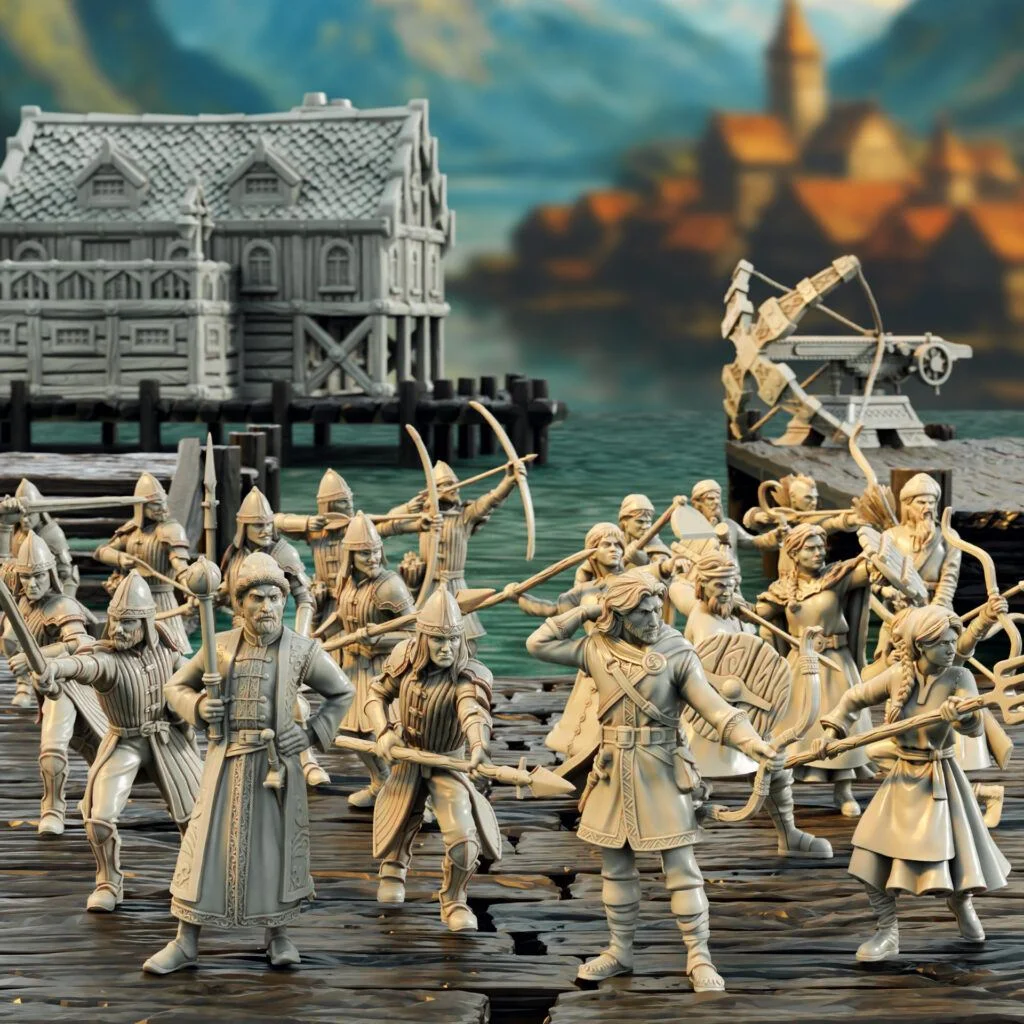
Building Boss Fights in 5e: Mechanics, Tension and Terrain
A boss battle should feel earned. Not just harder, smarter, stranger, and more dangerous. This isn’t about stats alone. It’s about timing, terrain, and tension. Learn how to turn your next showdown into a final reckoning that pushes the party’s tactics, choices, and nerves to the edge. The dungeon ends here, but the design starts now.
How to Design Legendary Boss Fights in DnD 5e
The air is heavy. The torches flicker. The villain who has haunted the party’s steps for months now stands before them, cloaked in shadow, power coiling around their hands. This is not just a combat encounter. This is a moment that could define your campaign.
Crafting boss fights in DnD means thinking beyond stat blocks. A legendary boss must feel like the final piece of the puzzle. That’s where building a boss encounter becomes more than hit points and dice rolls.
A few key elements to consider:
- The boss should break the rhythm. Legendary actions let them interrupt the turn order and change the flow of combat. Legendary Actions 5e explained gives DMs the chance to make bosses responsive and dangerous.
- Lair effects can shape the battlefield round by round. An ancient lich’s crypt pulsing with necrotic energy. A cursed cavern where the walls whisper commands. These elements make players react to the world, not just the boss.
- The fight should evolve. Halfway through, shift tactics or forms. When using Epic Encounters 5e, a second phase may be triggered – summoning reinforcements or revealing a final, monstrous shape.
A legendary boss doesn’t exist in isolation. They are part of the world. Let their abilities reflect the story. Let your players hate them, fear them, or even question them.
Using Terrain STL Files to Build Dynamic Boss Battlefields
The final confrontation rarely takes place in an empty stone room. Terrain matters. It tells the story of the location, affects tactics, and creates tension. And for DMs looking to elevate their encounters, terrain for boss fights becomes a critical piece of the puzzle.
When using STL terrain for final encounters, you move from imagination to physical interaction. The moment a player sees the summoning altar at the center of the battlefield, or the bridge barely holding above a pit of flame, they begin planning differently. That’s the power of terrain.
Instead of just placing enemies, build an environment with:
- Elevation changes to give archers and casters different sightlines
- Chokepoints that force movement decisions
- Hazards that interact with spells or boss mechanics
This is especially effective in boss room design with 3d terrain, where every pillar, trapdoor, and ledge matters. Even simple STL prints can create battlefield variety. You don’t need a massive diorama. Just a few strategic pieces can tell players everything they need to know.
A good battlefield does more than look good. It shapes the fight.
Layering Encounters: From Minions to Final Phase Bosses
No true villain fights alone. They have cultists chanting in shadows, clockwork beasts guarding their lair, and rituals already in motion when the party arrives. This is where layered encounters with STL props come into play.
Start with minions. Make the party burn resources. Create tension by withholding the boss until the moment is right. Then, when the true foe arrives, the battlefield has already changed. Spells are spent. Positions are exposed. Emotions are high.
You can also split boss fights into clear stages. A first phase with simple attacks. A second phase is triggered when the boss drops to half HP. A third where the boss calls upon forbidden powers and alters the terrain. This is the heart of designing boss battles – progression that tells a story.
Here’s what helps:
- Reinforcements with delayed entry
- Environmental triggers that transform the space
- Bosses who grow more dangerous or desperate as they fall
When thinking about how to prep boss fights in 5e, consider what makes the encounter cinematic. Build drama before the fight. Let players feel a rising threat before initiative is rolled. Make the structure part of the payoff.
Mechanics That Build Tension in 5e Boss Encounters
A fight without tension is just math. The best 5e mechanics for big fights are the ones that make players sit forward in their chairs. Surprise, consequence, and pressure must all come together to shape the mood.
Tension-building in tabletop RPG sessions comes from unpredictability. A boss who always attacks the same way becomes boring. Instead, give them a rotating set of abilities. Or tie their power to a countdown.
Examples:
- Three rounds until the summoning completes
- A cursed gem that must be destroyed, or the boss is invulnerable
- An ally is being drained every turn until rescued
These aren’t just mechanics. There are reasons for the players to act. They create drama by putting something on the line. Combine this with terrain zones for boss fights that matter. Slippery platforms. Areas that pulse with necrotic energy. Safe zones that collapse after three turns.
Each turn, something changes. That’s what holds attention.
Using Legendary Actions and Lair Effects to Raise the Stakes
It’s the third round. The boss has already acted. But then – another attack. Then the movement. Then a spell. Legendary actions shift the flow of battle, and when combined with the environment, they raise the stakes. That’s why how to run boss monsters in DnD starts with giving them presence beyond their turn.
With legendary actions 5e explained, it’s clear: you don’t want your boss waiting while the players each take a turn. Give them chances to strike back. Let them taunt, teleport, or manipulate terrain as players move.
And don’t stop there. Add lair effects. These are not just flash, they’re functional:
- Cracks in the stone floor erupt each round
- An imprisoned soul calls out and weakens spellcasters
- Magic zones appear and vanish, altering movement or damage types
When using boss room design with 3d terrain, lair actions become visual. The table itself changes. Players see a staircase collapse or a portal open, and they adapt.
Legendary and lair effects are tools to keep the boss threatening, and the players thinking.
Custom Stat Blocks and Terrain Zones for Epic Showdowns
Some villains need more than a name and a CR. They need custom mechanics that reflect their power, their story, and their place in the world. That’s where custom monster stat blocks for 5e become essential.
You don’t need to rewrite the Monster Manual. Take an existing creature and adjust it. Change the resistance list. Swap out spells. Add an aura that interacts with terrain. The key is to tie their abilities to their domain.
If you’re using physical models, this gets easier. Terrain zones for boss fights can be built into the stat block itself. A boss that is stronger while standing near cursed ruins. A spell that’s only available when inside a summoning circle. These interactions reward creativity and make the terrain feel meaningful.
With the right terrain for boss fights, your villain’s power becomes more than numbers. It becomes something the players can see and touch. Combine this with narrative tools – villains with goals, with flaws, with desperation – and the fight becomes the finale your table deserves.


